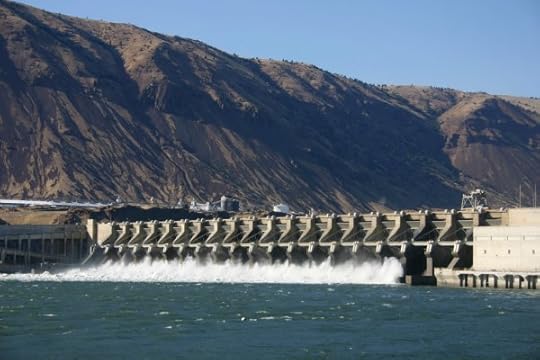Solar power 1
The entire Vuduri society pictured in Rome's Revolution runs on free, clean energy supplied by Casimir Pumps. As a group, the availability of infinite, free energy changes the goals of people from spending their lives striving to acquire wealth to one of altruism, trying to build a better society.
Can we achieve this today? Is there a place where we can go to get infinite, free energy without burning fossil fuels, making geothermal plants or building nuclear reactors? The answer is yes. The source of this power? The Sun. According to YourTurn.ca:
- Hydroelectric plants
- Ocean thermal energy conversion
- Wind farms
- Biomass
- Solar furnaces
- Solar panels
- Solar cells
In the next few articles, I'll cover most of these technologies.
Hydroelectric plants are powered by the Sun. How? The Sun beats down on bodies of water and causes water vapor to rise into the atmosphere. Eventually, the water returns as rain which collects and travels downhill as rivers which can be used to turn turbines to create electricity.

According to the National Hydropower Association:
And if done right, all of this with no environmental impact whatsoever!
Can we achieve this today? Is there a place where we can go to get infinite, free energy without burning fossil fuels, making geothermal plants or building nuclear reactors? The answer is yes. The source of this power? The Sun. According to YourTurn.ca:
At any moment, the Sun emits about 3.86 x 10e26 watts of energy. So add 24 zeros to the end of that number, and you’ll get an idea of how unimaginably large an amount of energy that is! Most of that energy goes off into space, but about 1.74 x 10e17 watts strikes the Earth. (ie: 174,000,000,000,000,000, or 174 quadrillion watts). If there are no clouds in the way, then one square meter of the Earth will receive about one kilowatt of that energy. So for the six hours in the middle of a sunny day, an area the size of a small backyard swimming pool (48 square meters) will receive about 288 kilowatts of energy. That’s nearly 10 times what the average US household uses in an entire day! (In the United States, the average daily electricity use is around 30 kilowatt hours per household).This means that if harnessed properly, the power of the Sun is all we need for the foreseeable future. So what are the ways we can harness the power of the Sun? While this is not an exhaustive list, we can use:
- Hydroelectric plants
- Ocean thermal energy conversion
- Wind farms
- Biomass
- Solar furnaces
- Solar panels
- Solar cells
In the next few articles, I'll cover most of these technologies.
Hydroelectric plants are powered by the Sun. How? The Sun beats down on bodies of water and causes water vapor to rise into the atmosphere. Eventually, the water returns as rain which collects and travels downhill as rivers which can be used to turn turbines to create electricity.

According to the National Hydropower Association:
The U.S. hydropower industry could install 60,000 MW of new capacity by 2025 depending on policy changes. That only 15% of the total untapped hydropower resource potential in the U.S., meaning hydropower can remain a growing energy source for decades to come. The U.S. had 96,000 megawatts of conventional hydropower and pumped storage capacity as of 2009, according to the Department of Energy. With 1 MW enough to power 750-1,000 average American homes according to Electric Power Supply Association, that’s enough generating capacity to produce electricity for roughly 72 to 96 million homes.
And if done right, all of this with no environmental impact whatsoever!
Published on March 12, 2014 21:09
•
Tags:
action, adventure, ftl, science-fiction, space-travel, vuduri
No comments have been added yet.
Tales of the Vuduri
Tidbits and insights into the 35th century world of the Vuduri.
- Michael Brachman's profile
- 21 followers



